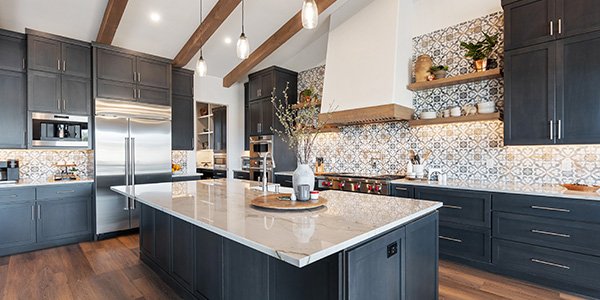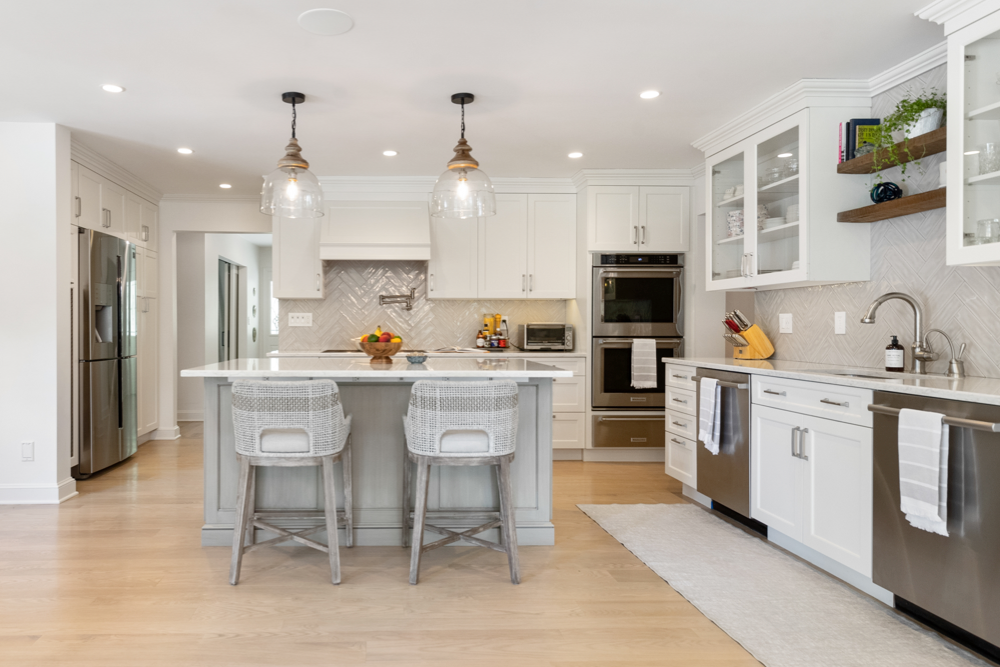Remodeling your kitchen is one of the smartest investments you can make in your home, but it also comes with one of the highest price tags. Whether you’re dreaming of new countertops, modern appliances, or custom cabinetry, having a solid budgeting plan is essential. You don’t want to start tearing things down only to realize halfway through that you’re running out of funds. A little financial prep now can save you big headaches later. Think of your kitchen as the heart of your home, and budgeting for its makeover should be just as thoughtful and strategic. In this guide, we’ll walk you through how to create a kitchen renovation budget planner that’s realistic, flexible, and tailored to your needs. So grab your coffee, sit back, and let’s break it down together.
Know What You Can Afford Before You Dream Big
Before diving into inspiration boards and Pinterest spirals, take a moment to evaluate what you can spend. It’s easy to get swept up in dreamy ideas, but reality always comes back around. Sit down with your financials and determine what amount you can comfortably invest without dipping into emergency savings.
Experts often recommend allocating 10-15% of your home’s value for a kitchen remodel. If your house is worth $300,000, that’s $30,000 to $45,000 as a starting point. Use a kitchen remodel cost estimator to get a rough idea of what various upgrades might cost in your area. These tools can give you a better sense of the average cost of kitchen remodel projects based on size, scope, and materials.
Break It Down: Kitchen Remodel Cost Breakdown
Now that you’ve got your top-line number, it’s time to create a kitchen remodel cost breakdown. This step is crucial because it forces you to think about where your money will go. Typically, costs break down as follows: cabinets (30%), labor (25%), appliances (15%), countertops (10%), flooring (7%), lighting (5%), and plumbing (5%).
Of course, these percentages are just averages and can vary based on your priorities. For example, if you’re doing a low cost kitchen remodel, you might allocate more toward DIY-friendly options or cost-effective kitchen upgrades. Keep this breakdown handy—it’ll help guide your spending decisions throughout the project.

Create Your Kitchen Remodel Budget Template
A kitchen remodel budget template is your best friend during this process. You can create one in Excel, Google Sheets, or use specialized apps. The goal is to keep track of estimates, actual expenses, and receipts all in one place.
Include categories like design fees, demolition, cabinetry, hardware, backsplash, fixtures, and unexpected costs. Yep, always factor in a 10-20% cushion for surprises. Trust us, there will be a few. This isn’t just about staying organized—it’s about staying sane. As your remodeling kitchen checklist grows, so does the importance of having a central location to manage all your figures.
Explore DIY Kitchen Remodel vs Contractor Cost
Trying to decide between a DIY kitchen remodel vs contractor cost is one of the biggest budgeting decisions you’ll make. Doing it yourself can certainly save money on labor, but it can also cost you more if you’re not confident in your skills.
Hiring a licensed contractor might seem pricey, but it often pays off in terms of quality, timeline, and peace of mind. Consider a hybrid approach—maybe you handle demolition and painting, but leave electrical and plumbing to the pros. Either way, compare the costs clearly so you know what you’re signing up for.
Get Real About Kitchen Remodeling Cost Per Square Foot
Understanding the kitchen remodeling cost per square foot helps you get a clearer picture of your budget. Nationwide, remodels typically range from $100 to $250 per square foot depending on the scope and quality of materials.
A modest 100-square-foot kitchen could run between $10,000 and $25,000. However, if you’re going for luxury finishes and custom details, expect to be on the higher end. Use this metric as a gut check to make sure your kitchen renovation budget planner aligns with your goals.
Stick With Budget-Friendly Kitchen Remodel Ideas
Not every great remodel has to break the bank. There are countless budget-friendly kitchen remodel ideas that can refresh your space without draining your wallet. Think open shelving instead of upper cabinets, laminate instead of stone countertops, or painting existing cabinets rather than replacing them.
Also, consider keeping the current layout. Moving plumbing or electrical lines significantly increases your costs. Small, smart changes often add up to big transformations. For more inspiration, check out our page on affordable kitchen renovation tips that won’t compromise on style.
Tap Into Kitchen Renovation Financing Options

If you’re feeling financially squeezed, don’t worry—there are kitchen renovation financing options available. From home equity loans and lines of credit to renovation-specific personal loans, you have choices.
Before signing on the dotted line, compare interest rates, repayment terms, and any potential penalties. Financing can make your dream kitchen more achievable, but only if you plan responsibly. We always recommend discussing these options with a trusted financial advisor or lender.
Track and Adjust With Your Kitchen Renovation Budget Planner
Once your remodel is underway, keep revisiting your kitchen renovation budget planner. Prices can change, issues can pop up, and ideas can evolve. It’s essential to keep tracking your spending and making adjustments where necessary.
If you find yourself overspending in one area, consider scaling back in another. Maybe that high-end faucet can wait, or perhaps you can skip under-cabinet lighting for now. Flexibility is the name of the game. Think of your planner as a living document, not a one-and-done worksheet.
Know How to Save Money on Kitchen Remodel Projects
Everyone wants to know how to save money on kitchen remodel plans—and rightly so. Start by shopping around for quotes, waiting for seasonal sales on appliances, or even checking out gently used options.
Reusing what you can (like keeping your current sink or repurposing your existing island) can shave off thousands. Timing your remodel during the off-season can also lead to better contractor availability and lower prices. It’s all about being strategic and a little creative.
Wrapping It Up
Kitchen remodeling on a budget doesn’t mean settling for less—it means planning for success. With a kitchen remodel budget template, realistic cost breakdowns, and an understanding of both DIY and professional options, you’re well on your way to a stress-free remodel. The goal is to balance vision with practicality and create a space you love coming home to.
By staying proactive, flexible, and informed, you can bring your dream kitchen to life without the nightmare price tag. And if you’re ready to take the next step, check out our kitchen remodeling services or contact us for a personalized estimate.
FAQs
1. What is the average cost of kitchen remodel projects in the U.S.?
The national average ranges from $15,000 to $50,000, depending on the kitchen size, materials, and labor involved.
2. Can I do a kitchen remodel on a tight budget?
Yes! Focus on budget-friendly kitchen remodel ideas like painting cabinets, choosing affordable countertops, and keeping your existing layout.
3. Is a kitchen remodel worth the investment?
Absolutely. A well-done kitchen remodel can return 70-80% of its cost in home value, especially if done smartly and within budget.
4. How do I choose between a DIY remodel and hiring a contractor?
It depends on your skills, time, and budget. DIY saves on labor but may take longer; hiring a contractor provides efficiency and expertise.

